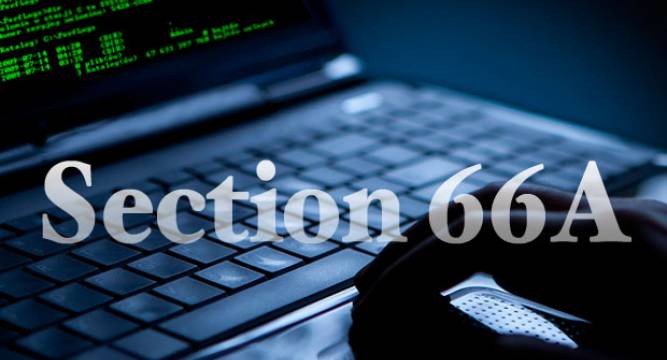News Highlight
The Supreme Court ordered states to stop prosecuting free speech on social media under Section 66A of the Information Technology Act.
Key Takeaway
- Section 66A of the Information Technology Act was declared unconstitutional by the court in a judgment seven years ago.
Section 66A of the IT Act
- Origin:
- It was Introduced in 2008 under the amendments to the IT Act, 2000.
- About
- It gave the government power to arrest and imprison an individual for allegedly “offensive and menacing” online posts.
- Punishment:
- It prescribed the punishment for sending messages through a computer or any other communication device like a mobile phone or a tablet, and a conviction could fetch a maximum of three years in jail.
- Shreya Singhal v. Union of India:
- In 2015, the Supreme Court struck down the law in the landmark case Shreya Singhal v. Union of India.
- The court held that the section was unconstitutionally vague and thus expanded the contours of free speech to the Internet.
- It was violative of Article 19(1) (a) and not saved under Article 19(2).
- Article 19(1) (a) gives people the right to speech and expression whereas 19(2) gives the state the power to impose “reasonable restrictions” on the exercise of this right.
Information Technology Act, 2000
- Origin:
- The Information Technology Act, 2000 is an Act of the Indian Parliament notified on 17 October 2000.
- Objective:
- The act was enacted to give legal sanction to electronic commerce and transactions, enable e-governance, and prevent cybercrime.
- Applicability of law:
- Under this law, foreign nationals can also be charged for any crime involving a computer or a network located in India.
- It also gives legal recognition to digital signatures.
- Amendments:
- The IT Act amended certain provisions of the Indian Penal Code (IPC), the Banker’s Book Evidence Act, of 1891, the Indian Evidence Act, of 1872 and the Reserve Bank of India Act, of 1934 to modify these laws to make them compliant with new digital technologies.
Content Source: The Hindu



